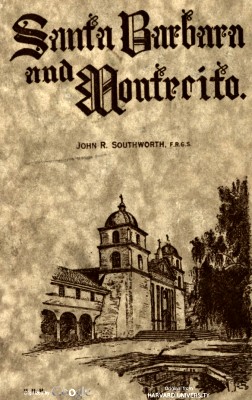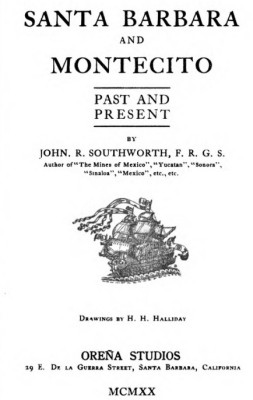
surfresearch.com.au
southworth : santa barbara and montecito, 1920.
southworth : santa barbara and montecito, 1920.
|
|
|
|
|
|
 |
surfresearch.com.au
southworth : santa barbara and montecito, 1920. |
 |
Southworth, John R.: Santa Barbara and Montecito, Past and Present. Drawings by H.H. Halliday. .Oreņa Studios, Santa Barbara, California, 1920. Hathi Trust https://hdl.handle.net/2027/hvd.32044086444668 |
 |
|
|
|
|
|
|